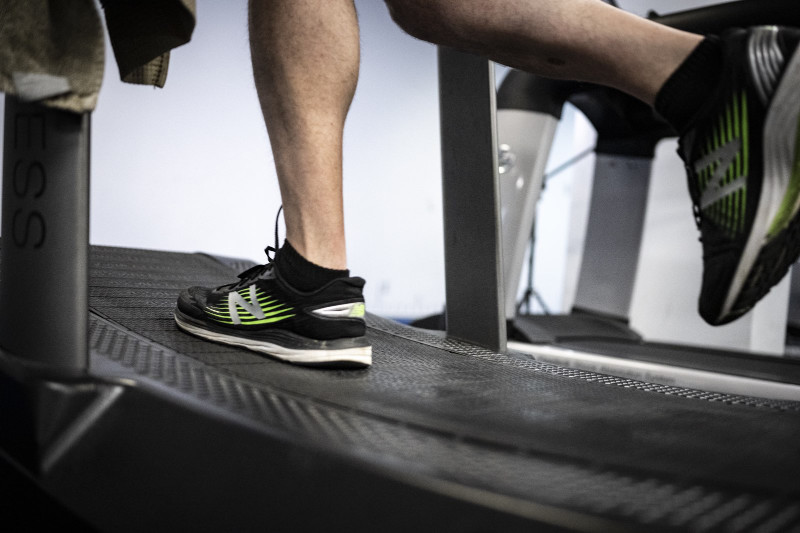Think you can’t run? Think again! With these tips from Caitlan Skillicorn Senior Physiotherapist and the help of a physiotherapist, you can prepare for a run event and achieve your running goals safely and effectively. Whether you’re a beginner or just looking to improve your running, these tips will help you start your journey towards becoming a stronger and healthier runner. So don’t let your doubts hold you back – lace up your shoes and let’s get started!
Getting started
Getting started with running can be an exciting but daunting task, especially if you are new to the sport. Here is a guide to help you get started and prepare for an event like a fun run or City to surf with the help of physiotherapy:
-
Start Slowly: If you are new to running, it is important to start slowly and build up gradually. Begin with shorter distances, such as 2-3km runs, and increase your mileage by no more than 10% each week. This will help you avoid injury and build endurance gradually.
-
Wear Proper Footwear: Wearing the right running shoes is important to reduce the risk of injury. Consult with a physiotherapist or a specialist running shoe store to find the right pair of shoes for your foot type and gait.
-
Warm-Up and Stretch: A proper warm-up can help reduce the risk of injury and prepare your body for exercise. Start with some light stretching exercises, such as lunges, squats, and leg swings, and gradually increase the intensity of your warm-up.
-
Follow a Training Plan: A structured training plan can help you build endurance and prepare for a long distance run. Consult with a physiotherapist to create a personalised training plan that takes into account your current fitness level, injury history, and other factors.
-
Cross-Train: Cross-training can help you build overall fitness and reduce the risk of injury. Incorporate strength and flexibility exercises into your training routine to help prevent injury and improve performance.
-
Monitor Your Progress: Keep track of your runs and monitor your progress. Use a GPS watch or smartphone app to track your distance, pace, and heart rate. This can help you stay motivated and make adjustments to your training plan as needed.
-
Rest and Recover: Rest days are important to allow your body to recover from exercise and prevent overuse injuries. Make sure to include rest days in your training plan and prioritise good sleep and nutrition.
-
Address Any Injuries: If you experience any pain or injuries during training, seek the advice of a physiotherapist. They can help you address the underlying issue and develop a treatment plan to get you back on track.
Common Injuries
Speaking of injuries, as with any physical activity, running can also carry a risk of injury, especially for those who are just starting out or increasing their mileage. Here are some of the most common injuries that runners may experience when starting to run longer distances:
- Shin Splints: This is a common overuse injury that occurs when the muscles and tendons surrounding the shin bone become inflamed. Shin splints are often caused by increasing mileage or intensity too quickly, and can be prevented by gradually increasing mileage and incorporating strength and flexibility exercises into your training routine.
- Plantar Fasciitis: This is an inflammation of the plantar fascia, a band of tissue that runs from the heel to the toes. Plantar fasciitis can cause sharp pain in the heel or arch of the foot, especially during the first steps after waking up or after sitting for a long time. This injury is often caused by overuse, improper footwear, or a lack of flexibility in the calf muscles.
- IT Band Syndrome: This is a common knee injury that occurs when the iliotibial (IT) band, a thick band of tissue that runs from the hip to the shin bone, becomes tight or inflamed. IT band syndrome can cause pain on the outside of the knee and is often caused by overuse or poor biomechanics.
- Runner’s Knee: This is a broad term that refers to several different types of knee pain, including patellofemoral pain syndrome and chondromalacia patella. Runner’s knee can cause pain around the kneecap and is often caused by overuse, poor biomechanics, or a lack of strength in the muscles surrounding the knee.
- Achilles Tendinitis: This is an inflammation of the Achilles tendon, which connects the calf muscles to the heel bone. Achilles tendinitis can cause pain and stiffness in the back of the heel and is often caused by overuse or a lack of flexibility in the calf muscles.
If you do experience an injury, it’s important to rest and seek physiotherapy treatment if necessary. With proper training and precautions, running can be a safe and rewarding form of exercise that can help you achieve your fitness goals.
With these tips, information and the help of a physiotherapist, you can prepare for a long distance or fun run and achieve your running goals safely and effectively.

